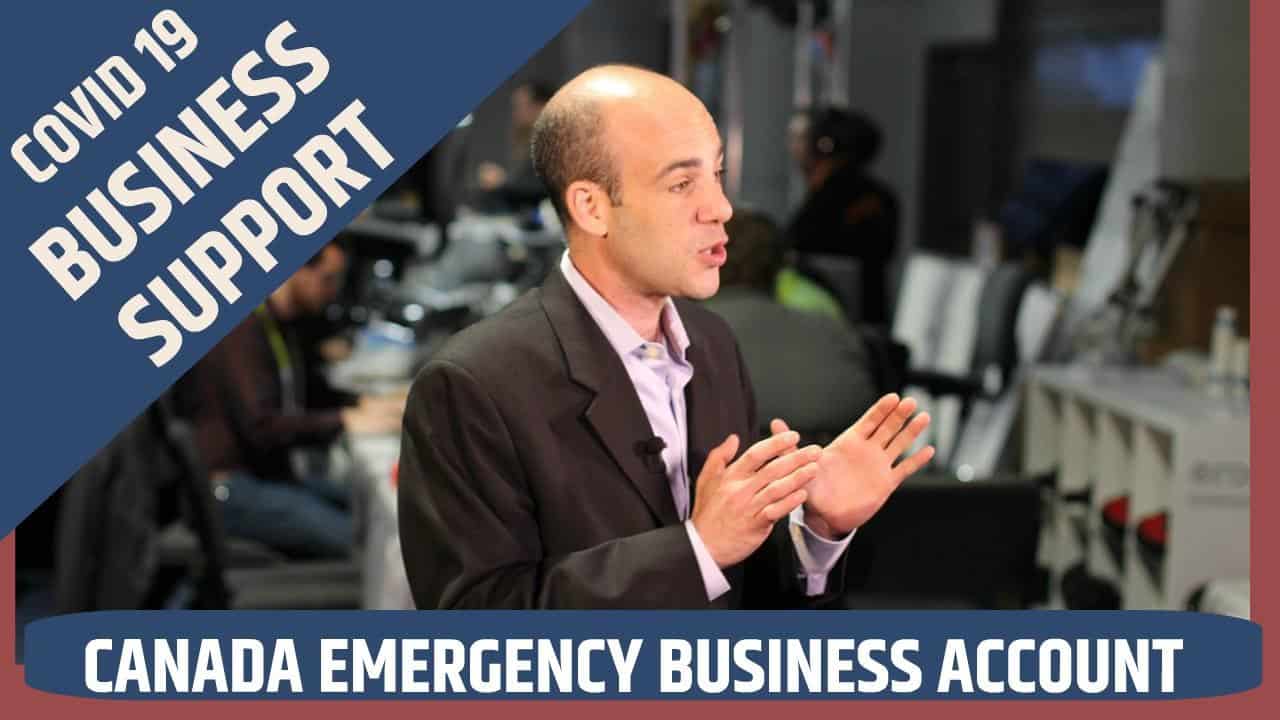CEBA loan repayment: Introduction
Welcome to Brandon’s Blog, where we make every effort to furnish companies and all businesses with the necessary methods to deal with challenging economic uncertainty. Understanding your present financial health and wellness is crucial in overcoming problems and safeguarding long-lasting durability. As we are receiving many calls from entrepreneurs who are concerned about their company’s ability to make their CEBA loan repayment before the end of this year to take advantage of the partial loan forgiveness available before January 1, 2024, I thought this topic would be timely.
The COVID-19 pandemic has produced unprecedented financial challenges for companies around the world. Lockdowns lowered consumer spending, and the previously interfered with supply chains have left many battling to stay afloat. Businesses are confronted with the job of balancing the desire to protect the jobs of their employees while trying to turn a profit, or at least, stay afloat.
The financial influence of the pandemic has actually been felt most acutely by small and medium-sized companies, a number of which have been compelled to close permanently. Governments all over the world have carried out different relief steps to support struggling businesses, including the CEBA and other pandemic loans, yet there is no doubt that the roadway to recuperation will be a long and tough one.
As reported in a Financial Post article this past summer, “‘I feel abandoned’ — businesses warn of bankruptcy as deadline to pay back COVID loans looms, many businesses are still struggling with below-normal revenues even after the lifting of pandemic-related lockdowns. These businesses were able to receive federal government assistance through programs such as the Canada Emergency Business Account (CEBA) to stay afloat.
However, with the rise in interest rates and Canadian inflation, many businesses are experiencing further declines in earnings and are concerned about their ability to repay their CEBA loans before the original interest-free period, now extended, ends on January 18, 2024. On September 14, 2023, the federal government slightly extended the deadline, because of the clarion call of business associations across Canada for an extension to the repayment timeline. (See the section below “CEBA loan repayment: Extension hot off the press!“).
The article refers to a Canadian Federation of Independent Business (CFIB) survey revealing that 40% of the nearly 6,000 small businesses that participated in the survey are at risk of missing the current repayment deadline. Businesses with zero to four employees are most likely to struggle with making the payment. Even among the 47% who reported being able to pay, half of them anticipate difficulty in doing so. These findings come from Canada’s largest association of small businesses.
In this Brandon’s Blog, we aim to provide practical advice and valuable insights for businesses navigating the CEBA deadline.
CEBA loan repayment: Explanation of the CEBA and its importance during the pandemic
In response to the challenges presented by the COVID-19 pandemic, the Canadian government implemented a support program for small and medium-sized eligible businesses called CEBA. This initiative offered interest-free loans of up to $60,000 to eligible organizations, with a portion of the loan being forgiven if repaid by the new January 18, 2024 deadline without the borrower defaulting.
CEBA played a vital role in providing much-needed financial aid to struggling SMEs during these challenging times. By helping companies cover their expenses and maintain operations, CEBA assisted in preserving jobs and supporting economic stability. Overall, this program was effective in mitigating the impact of the pandemic on Canadian businesses.

The CEBA loan repayment deadline
The Financial Post article stated that as the deadline for repayment for each Canadian operating business with an outstanding CEBA loan draws near, many business owners are considering alternative loans to repay the CEBA loan they received. This decision could have a negative impact on the future of their businesses that are already under financial pressure.
Business owners quoted in the article stated that they believe they will have to utilize a line of credit to make the CEBA loan repayment by the deadline in order to take advantage of the forgivable portion. They are already struggling with overdue rent and property taxes, which has added to his financial burden.
These business owners say they have noticed an increase in unsolicited loan offers from dubious sources, who are looking to exploit the situation. A loan offer from an online lender had an interest rate of around 20%! Naive business owners that are desperate may be vulnerable to these predatory lending practices.
Missing the deadline for the CEBA loan repayment to take advantage of the loan forgiveness portion can lead to potential consequences for struggling businesses. We have been receiving phone calls from small business owners thinking that if they miss this end-of-year deadline it means their business is over and they will need to consider business bankruptcy.
These concerns are legitimate. The pandemic was not the small business’s fault. However, it seems that many business owners are unnecessarily hitting the panic button over the CEBA loan interest-free repayment date.
CEBA loan repayment is significant
Loan repayment is of utmost importance for all businesses facing financial uncertainty, including when it comes to the CEBA loan. Failing to make the CEBA loan repayment on time results in penalties and additional fees.
What will happen? There will be a loss of the substantial benefit from the loan forgiveness portion. As well, the loan’s interest-free period will end. CEBA loans will become two-year term loans and will begin charging interest at 5% per annum. Given the interest rate increases implemented by the Bank of Canada, a loan with a 5-per-cent annual rate right now looks cheap!
It is natural for every business owner to want to show their financial responsibility and take advantage of the substantial discount offered. But if the business is recovering, and will be able to start making CEBA loan repayment monthly payments beginning in 2024, the end result is not one that by itself, would cause businesses to fail. The CEBA loan is also an open loan, so if the business starts thriving after 2023, it can pay off the full amount then owing, albeit, without the juicy forgiveness portion.
So although it is preferable to make the CEBA loan repayment in full by the end of this year to take full advantage of the discount, the business will not necessarily fail just because the business cannot make a full CEBA loan repayment this year. However, if your business cannot recover from the COVID-19 pandemic, then the CEBA loan is not the only debt your business will not be able to repay.

CEBA loan repayment: Extension hot off the press!
On September 14, 2023, Prime Minister Trudeau, in a resounding declaration, addressed the pressing matter of CEBA loan repayment deadlines. The new policy creates an extended horizon. Companies now have until January 18, 2024, to make the CEBA loan repayment and take advantage of the partial loan forgiveness. For those not able to do so, the federal government is now offering an extra year to the timeline for repaying these term loans.
The CEBA initiative, which ran from April 9, 2020, to June 30, 2021, had bestowed nearly 900,000 SMEs and not-for-profits with a staggering sum of $49 billion. These financial lifelines were strategically deployed to defray the exigent operational overheads that besieged these businesses throughout the harrowing pandemic.
The horizon of the CEBA loan repayment deadline now stretches out from December 31, 2023, reaching January 18, 2024, all while preserving the prospect of partial loan forgiveness. The reason given is to make accommodations for the bustling year-end routines that a myriad of Canadian enterprises grapple with.
For those who find themselves unable to conform to the revised CEBA loan repayment deadline, as long as they make the requisite arrangements by January 18, 2024, their term loans will now extend the term loan repayment date yet another year, beyond the horizon of December 31, 2025, to December 31, 2026. The annual interest rate, for this now up-to-three-year term loan, remains resolute at a steadfast 5% per annum.
Here are some helpful tips that will help you determine what is best for you and your business going forward.
CEBA loan repayment: Term of the loan and principal payment schedule
The CEBA initiative extended financial support to qualified enterprises, granting them a vital economic lifeline. Let us delve into the key features of the CEBA loan reimbursement conditions:
Interest component
Not a single penny in interest shall accrue up to the fateful date of January 18, 2024. This means that for the entirety of the outstanding loan until that date, an annual interest rate of a resounding zero percent prevails. Subsequently, the interest rate shall metamorphose into 5% per annum, and whichever of the financial institutions processed your CEBA loan, will advise you of both the interest and principal reimbursement schedule.
The redemption and maturity of CEBA loans
There exists no obligation to remit any of the principal outstanding balance prior to January 19, 2024. Should the loan’s existence persist beyond this threshold, you will be obligated to start making monthly blended payments of interest and principal repayment until such time as the entire principal amount is repaid (without getting the benefit of any loan forgiveness), no later than the new date of December 31, 2026. Therefore, the CEBA loan goes from a 2-year term loan to a 3-year term loan.
Debt forgiveness provisions
In the eventuality that the outstanding balance of principal is paid off in full on or prior to January 18, 2024, a unique privilege unveils itself – the right to offset a portion of the debt forgiveness from the total owing. This accommodation is provided by the Federal government and processed through financial institutions, as long as the business has not, at a prior juncture, defaulted upon its financial obligations as per the loan agreement.

CEBA loan repayment: Assess your business’s financial situation
Assessing the financial health of a company is extremely important in understanding its current situation and potential for first survival, then profitability and growth. Examining key financial metrics such as cash flow, revenue trends, and debt levels can provide valuable insights for stakeholders to make informed decisions about the company’s future. By identifying areas of strength and weakness, as well as potential risks and opportunities, stakeholders can develop effective financial strategies that align with the company’s goals and objectives. Ultimately, conducting a thorough assessment of a company’s financial health is critical for ensuring its long-term viability and success.
To attain business financial success, it is necessary to begin with a thorough examination of the financial scenario of the business. Begin by collecting all relevant financial records, such as bank statements and invoices, as well as calculating your regular monthly revenue versus your expenses. This will aid you in determining your net cash flow, an important consideration in making informed financial decisions.
Once you’ve identified your expenditures, it’s time to find methods to reduce costs. This could include cutting optional spending or renegotiating agreements with vendors. Furthermore, it is essential to prioritize payments based on due days and rates of interest to manage outstanding debts.
Preserving a budget plan is important to keeping your finances on track. It aids you in staying clear of overspending and also makes sure that you’re making progress towards your financial goals. Frequently assessing your cash flow, expenses, and outstanding debts is crucial for accomplishing long-lasting financial stability.
CEBA loan repayment: Explore other financial options
For companies to flourish in the current financial climate, it is vital to increase their funding past relying exclusively on the CEBA. Although CEBA has been helpful for companies affected by the COVID-19 pandemic, it is not a practical long-term remedy. To ensure sustainability and also safety and security, businesses need to diversify their financial resources.
This could be accomplished by exploring alternative borrowing options like conventional financing or using funds from government programs. In addition, it may deserve to think about cost-cutting procedures to free up funds and create alternate revenue streams. By branching out, companies can much better withstand unanticipated financial challenges, build durability, and secure long-term success.
CEBA loan repayment: Business cost-cutting measures
Carrying out cost-cutting measures is an essential technique for companies to boost financial stability. Cost-cutting actions are designed to decrease expenditures, enhance effectiveness, and inevitably improve the bottom line. By carrying out these actions, businesses can optimize their operations and also allocate resources more effectively. This results in improved success as well as cash flow, which can be reinvested right into the business for future growth. Furthermore, cost-cutting procedures can assist services to stay competitive in their respective markets. On the whole, executing cost-cutting steps is a required step for businesses to keep economic stability and accomplish profitability, stability and growth.
Managing your company’s financial resources properly requires you to recognize and decrease non-essential expenses. This includes critically evaluating your cost control habits to cut down on unneeded expenditures without jeopardizing your important needs.
One useful idea is to develop a spending plan that takes into consideration all your expenditures as well as track your spending. This will allow you to determine areas where you are spending too much and make necessary changes.
An additional strategy is to prioritize your expenses as well as focus on what are your essential requirements while reducing non-essential expenses. Things such as eating in restaurants or acquiring unnecessary items are obvious non-essential expenses. Negotiating with your suppliers to decrease prices or switching to more budget-friendly alternatives can also be practical.
By adopting these easy yet sensible strategies, you can conserve money and enhance your business’s financial security in the long term.
As companies navigate economic difficulties and also change top priorities, there might come a time when staff reductions come to be required. It is necessary to deal with these situations with realism, recognizing the possible effect on employees’ financial safety and spirits. Interaction is crucial, as well as employers need to be forthright about why reductions are required, along with transparency concerning the timing and the need for downsizing.
Assistance and resources, such as severance plans as well as job search assistance, can help reduce the burden for impacted staff members. When choosing who will be affected by decreases, it is very important to focus on fairness and equity. Before implementing a downsizing plan, it is advisable to check out alternatives such as reduced hours or furloughs before considering terminations. Ultimately, handling HR reductions with sensitivity and regard to the human element can aid in keeping trust between employers and employees, even in tough times.

CEBA loan repayment: Seek professional advice
Seeking professional advice from financial experts, lawyers and industry specialists is a smart financial investment for any company’s future. These professionals possess specialized expertise and experience that can help business owners make educated choices about improving business practices and operations leading to improved performance and profits. They can offer valuable advice on budgeting, managing financial obligations, and legal and operational efficiency matters.
Furthermore, financial advisors can offer customized methods that cater to each business’s special financial goals and circumstances. By working with advisors, entrepreneurs can feel great that their strategies are well-informed and well-executed. Inevitably, the true value of talking to experts hinges on the comfort of having a solid structure and a clear roadmap for accomplishing business success.
In the business world today, it is essential to have a crystal-clear understanding of your firm’s standing and the necessary activities to achieve development and success. The advantages of professional guidance are plentiful as it gives customized methods to help your business. Collaborating with a specialist or various specialists can assist in identifying your core competencies as well as weaknesses, offering tailored suggestions to improve your business operations. This includes expert suggestions on marketing, finance, personnel, operations and a lot more. By obtaining a fresh perspective on your company, you can significantly enhance efficiency, performance, and productivity in the long run. Consequently, seeking professional assistance is a logical choice for businesses wanting to reach their goals and beyond.
CEBA loan repayment: Conclusion
In conclusion, CEBA loan repayment is an issue causing entrepreneurs a great amount of stress these days. Both individuals and business owners must take proactive measures to address financial difficulties and promptly seek assistance when necessary. It is crucial to recognize that financial stress is a prevalent concern and seeking help is a demonstration of fortitude, rather than vulnerability. Should you encounter challenges in managing your finances and find yourself burdened by stress, do not delay in pursuing aid.
Revenue and cash flow shortages are critical issues facing people, entrepreneurs and their companies and businesses with debt problems that are in financial distress. Are you now worried about just how you or your business are going to survive? Are you worried about what your fiduciary obligations are and not sure if the decisions you are about to make are the correct ones to avoid personal liability? Those concerns are obviously on your mind.
The Ira Smith Team understands these financial health concerns. More significantly, we know the requirements of the business owner or the individual who has way too much financial debt. You are trying to manage these difficult financial problems and you are understandably anxious.
It is not your fault you can’t fix this problem on your own and it does not mean that you are a bad person. The pandemic has thrown everyone a curveball. We have not been trained to deal with this. You have only been taught the old ways. The old ways do not work anymore. The Ira Smith Trustee & Receiver Inc. Team uses innovative and cutting-edge methodologies, to adeptly navigate you through the intricacies of your financial challenges, ensuring a resolution to your debt-related predicaments without resorting to the rigours of the bankruptcy process. We can get you debt relief now!
We have helped many entrepreneurs and their insolvent companies who thought that consulting with a Trustee and receiver meant their company would go bankrupt. On the contrary. We helped turn their companies around through financial restructuring.
We look at your whole circumstance and design a strategy that is as distinct as you are. We take the load off of your shoulders as part of the debt settlement strategy we will draft just for you.
The Ira Smith Trustee & Receiver Inc. team understands that people facing money problems require a lifeline. That is why we can establish a restructuring procedure for you and end the discomfort you feel.
Call us now for a no-cost consultation. We will listen to the unique issues facing you and provide you with practical and actionable ideas you can implement right away to end the pain points in your life, Starting Over, Starting Now.












